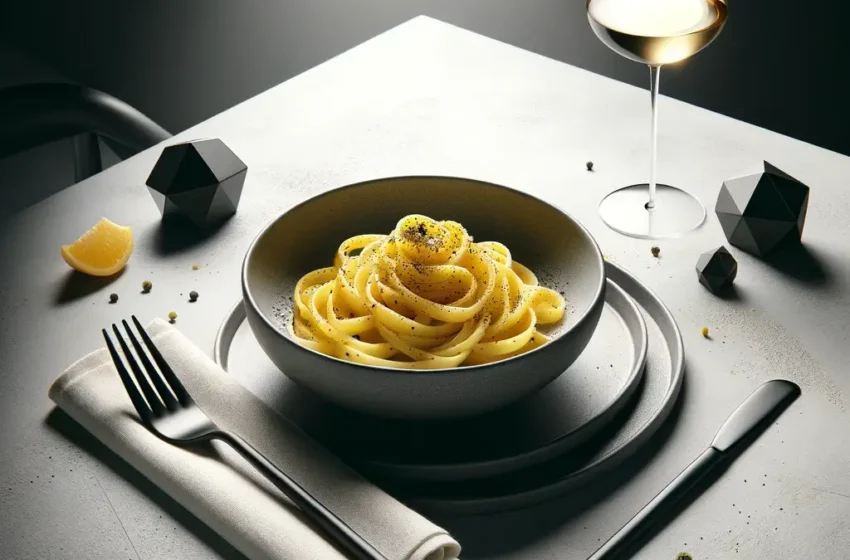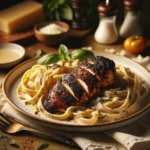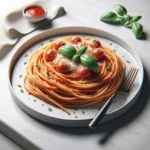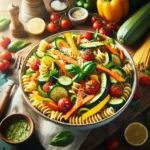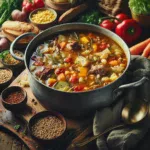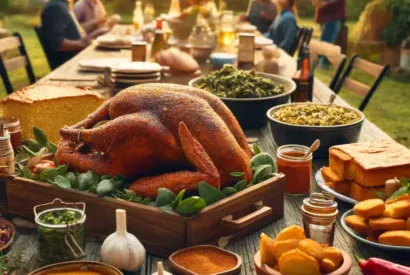Roscioli Roman Cacio e Pepe Recipe: A Culinary Journey to Rome
As a food reviewer who has had the pleasure of savoring authentic Roman cuisine right at its heart, I’ve come across a dish that perfectly encapsulates the spirit and flavor of Rome: Cacio e Pepe. This simple yet sophisticated pasta dish is a staple in Roman trattorias, and Roscioli, a renowned name in Rome, serves one of the most divine versions I’ve ever tasted. Today, I’m thrilled to share with you a detailed step-by-step guide on how to recreate Roscioli’s Roman Cacio e Pepe at home, along with pro tips, health benefits, and a conclusion that will leave you eager to try this recipe yourself.
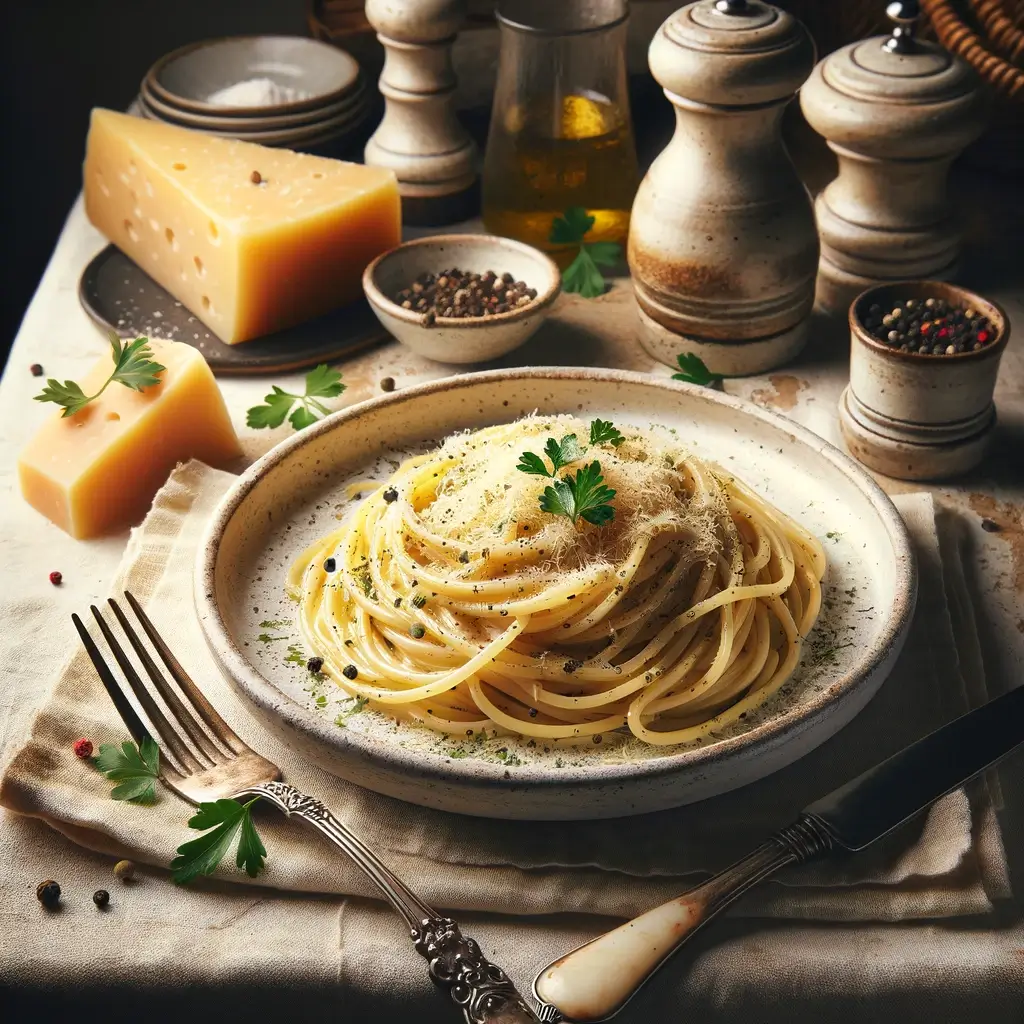
Overview of How To Make Roscioli Roman Cacio e pepe recipe.
- Preparation Time
10 minutes - Cooking Time
15 minutes - Serves
4 People - Difficulty
Medium
Ingredients
- 320g (11oz) of Tonnarelli or Spaghetti
- 200g (7oz) of Pecorino Romano cheese, finely grated
- Freshly ground black pepper (to taste)
- Salt (for pasta water)
Instructions
- Step 1: Boil the Pasta
Bring a large pot of water to a boil. Add a generous amount of salt once boiling. Cook the pasta until it’s very al dente, as it will continue cooking with the sauce. Reserve about 2 cups of pasta water before draining. - Step 2: Prepare the Cheese Mixture
In a large bowl, combine the finely grated Pecorino Romano cheese with about 1 cup of the reserved pasta water. Whisk vigorously until it forms a smooth, creamy sauce. Adjust the sauce consistency by adding more pasta water if needed. - Step 3: Toast the Pepper
In a large skillet, toast the freshly ground black pepper until fragrant. This should take about 1-2 minutes over medium heat. Be careful not to burn the pepper. - Step 4: Combine Pasta and Sauce
Add the drained pasta to the skillet with the toasted pepper. Toss well to coat. Then, remove the skillet from the heat and add the cheese mixture to the pasta. Toss everything together vigorously until the pasta is evenly coated with a creamy sauce. If the sauce is too thick, add a little more pasta water to reach the desired consistency. - Step 5: Serve Immediately
Serve the Cacio e Pepe immediately, garnished with additional Pecorino Romano cheese and a sprinkle of freshly ground black pepper.
Pro Tips For Roscioli Roman Cacio e pepe recipe.
- Cheese Selection: The quality of Pecorino Romano cheese is paramount. Look for authentic, aged Pecorino for the best flavor.
- Pasta Water: The starchy pasta water is key to creating the silky, smooth sauce. Don’t forget to reserve enough before draining the pasta.
- Serving Temperature: Serve the pasta hot, as the cheese sauce can start to solidify as it cools.
Health Benefits
While Cacio e Pepe is a treat in terms of flavor, it also offers some nutritional benefits. Pecorino Romano cheese is rich in protein and calcium. However, moderation is key due to its high sodium and fat content.
Conclusion
Roscioli’s Roman Cacio e Pepe is more than just a dish; it’s an experience, a journey through the flavors of Rome. With the right ingredients and techniques, you can bring a taste of Roman culinary tradition to your table. This recipe is perfect for a cozy dinner, offering both comfort and sophistication in each bite.
Embracing the simplicity and elegance of Italian cooking, this Cacio e Pepe recipe is sure to delight your palate and impress your guests.
You Can Also Read:- Old Fashioned Baked Macaroni And Cheese
FAQs about the Roscioli Roman Cacio e Pepe recipe
- What is Cacio e Pepe?
- Cacio e Pepe is a simple Roman pasta dish that means “cheese and pepper.” It’s made with only a few key ingredients: pasta, Pecorino Romano cheese, black pepper, and pasta water.
- Who is Roscioli?
- Roscioli is a renowned name in Rome, Italy, known for their bakery, deli, and restaurant that serves high-quality Italian cuisine, including a famous version of Cacio e Pepe.
- What type of pasta is best for Cacio e Pepe?
- The traditional pasta for Cacio e Pepe is tonnarelli or spaghetti. These long, thin pastas work well with the cheese and pepper sauce.
- Can I use Parmesan instead of Pecorino Romano?
- While Pecorino Romano is the traditional cheese used due to its sharp and salty flavor, Parmesan can be used as a substitute, though it will alter the flavor profile slightly.
- How do I prevent the cheese from clumping?
- To prevent clumping, remove the pan from heat before adding the cheese, and add a little pasta water to create a smooth sauce. Stir vigorously to emulsify the cheese with the water.
- What is the secret to the perfect Cacio e Pepe sauce?
- The secret lies in the balance of cheese, pepper, and pasta water to achieve a creamy, emulsified sauce that coats the pasta evenly without clumping.
- Can I add oil or butter to the recipe?
- Traditional Roscioli Roman Cacio e Pepe does not use oil or butter. The creaminess is achieved through the emulsion of pasta water and cheese.
- How much black pepper should I use?
- The amount of black pepper is to taste, but typically, a generous amount is used to give the dish its characteristic spicy kick. Freshly ground pepper is preferred for the best flavor.
- What’s the best way to grind the pepper?
- Using a pepper mill to grind fresh black pepper coarsely is recommended for the best flavor and texture.
- Can I make Cacio e Pepe ahead of time?
- Cacio e Pepe is best served immediately. The sauce can become clumpy or the pasta overcooked if it sits too long.
- Is Cacio e Pepe suitable for vegetarians?
- Yes, it’s suitable for vegetarians who consume dairy.
- What should I do if my sauce is too thick?
- If the sauce becomes too thick, add a little more pasta water, a tablespoon at a time, until the desired consistency is reached.
- Can gluten-free pasta be used?
- Yes, gluten-free pasta can be used as a substitute for traditional pasta if you’re adhering to a gluten-free diet.
- How do I serve Cacio e Pepe?
- Serve it hot, directly after combining the pasta with the sauce. You can garnish with additional grated cheese and freshly ground black pepper.
- Can I add garlic to the recipe?
- Traditional Cacio e Pepe doesn’t include garlic. However, you can add it for personal preference, but it will change the classic flavor.
- What is the ideal cheese to pasta ratio?
- A good starting point is about 1 cup of grated Pecorino Romano cheese for every 8 ounces of pasta, but you can adjust to taste.
- How do I choose the best Pecorino Romano cheese?
- Look for Pecorino Romano that is DOP (Denominazione di Origine Protetta) certified, indicating it’s produced under strict regulations for authenticity and quality.
- What’s the importance of pasta water in the recipe?
- The starchy pasta water helps to bind the cheese and pepper to the pasta, creating a creamy sauce.
- Can I use pre-ground black pepper?
- Freshly ground black pepper is recommended for its superior flavor, but pre-ground can be used in a pinch.
- How can I adjust the recipe for two people?
- Simply halve the ingredient quantities listed for a standard recipe serving four.
- What if my sauce is too runny?
- If the sauce is too runny, let it cook for a minute or two longer on low heat to thicken, stirring continuously.
- Can I use other types of pasta like fusilli or penne?
- While not traditional, you can use other pasta shapes. However, the sauce might adhere differently to different shapes.
- Is there a specific type of black pepper recommended?
- Any good-quality black peppercorn that can be freshly ground is suitable. Some prefer Tellicherry pepper for its complex flavor.
- What are common mistakes to avoid?
- Common mistakes include using too high heat when adding the cheese, not using enough pasta water, and overcooking the pasta.
- Can I add meat or vegetables to Cacio e Pepe?
- Traditional Cacio e Pepe doesn’t include additional ingredients, but you can add cooked pancetta, mushrooms, or asparagus for variation.
- What wine pairs well with Cacio e Pepe?
- A crisp white wine like a Pinot Grigio or a light red wine such as Chianti can complement the dish well.
- How do I store leftovers?
- Leftovers can be stored in the refrigerator in an airtight container for up to two days, though the quality is best when fresh.
- Can Cacio e Pepe be reheated?
- It can be gently reheated on the stove over low heat, adding a little water or milk to help re-emulsify the sauce.
- Why does my cheese sometimes turn grainy?
- Graininess can occur if the cheese is added to the pan when it’s too hot or if it’s not stirred quickly enough into the pasta water.
- How can I make my Cacio e Pepe creamy every time?
- The key is to quickly whisk the cheese into the pasta off the heat, using just enough pasta water to achieve a smooth and creamy consistency without overheating the sauce.

